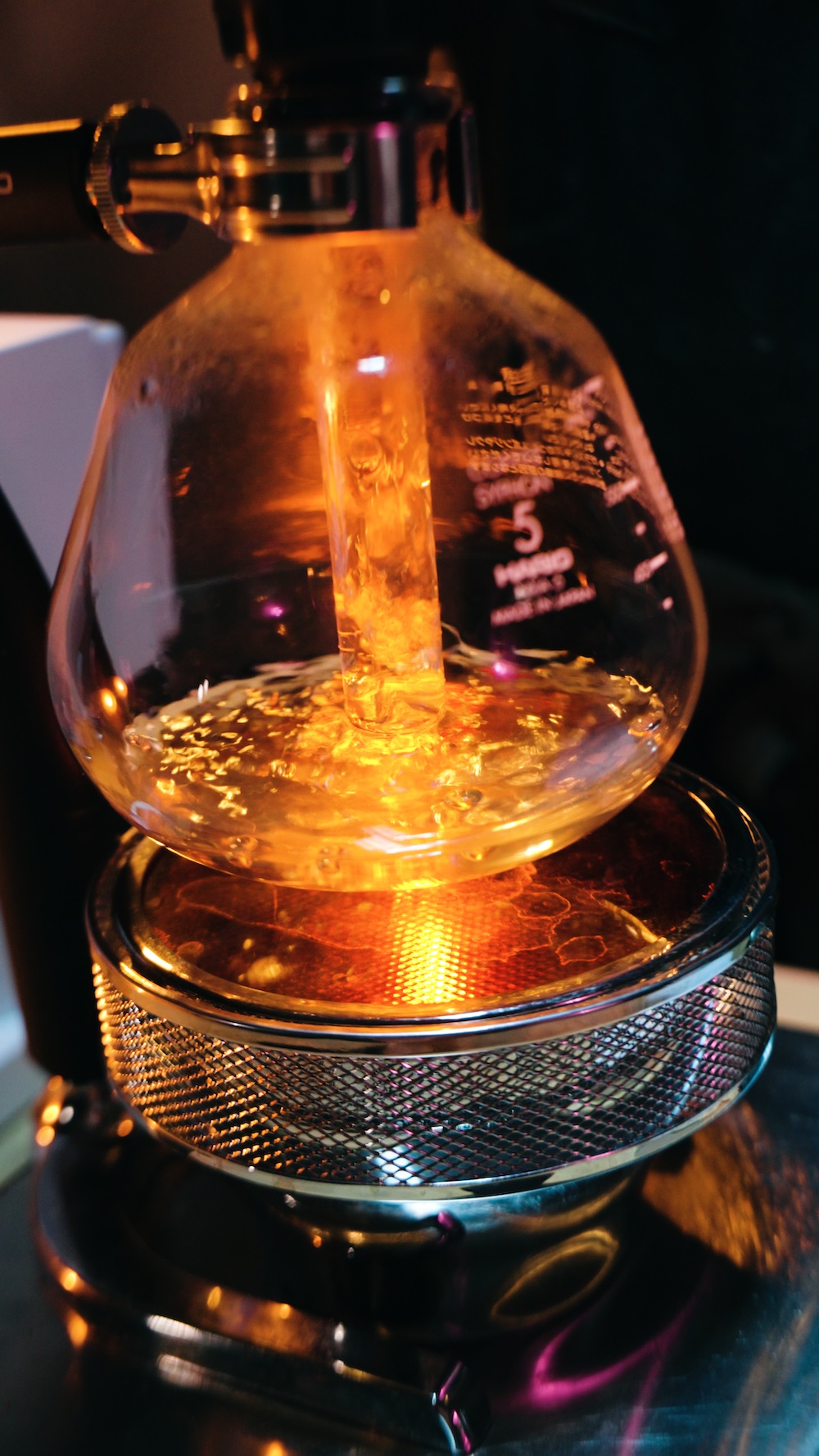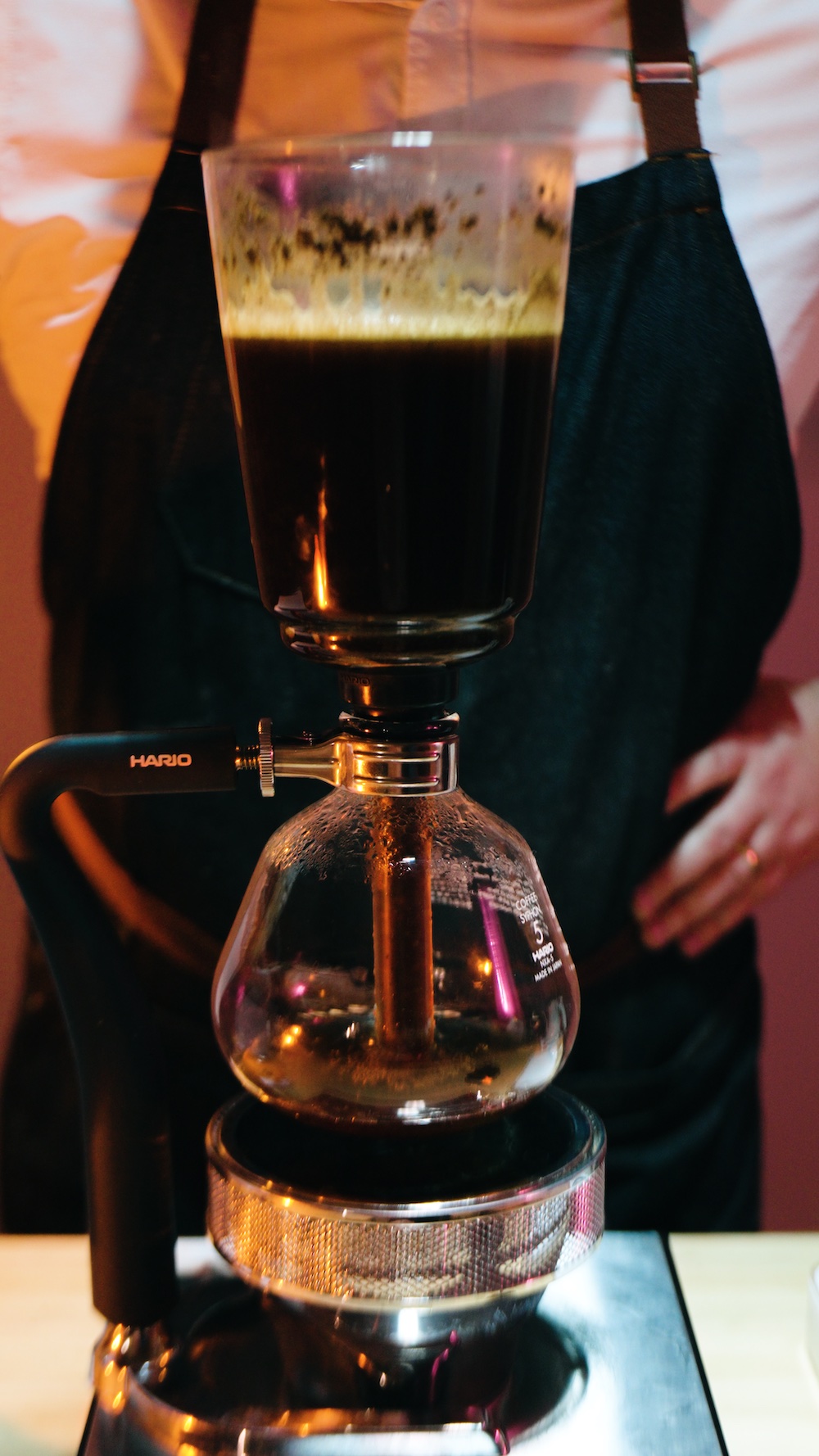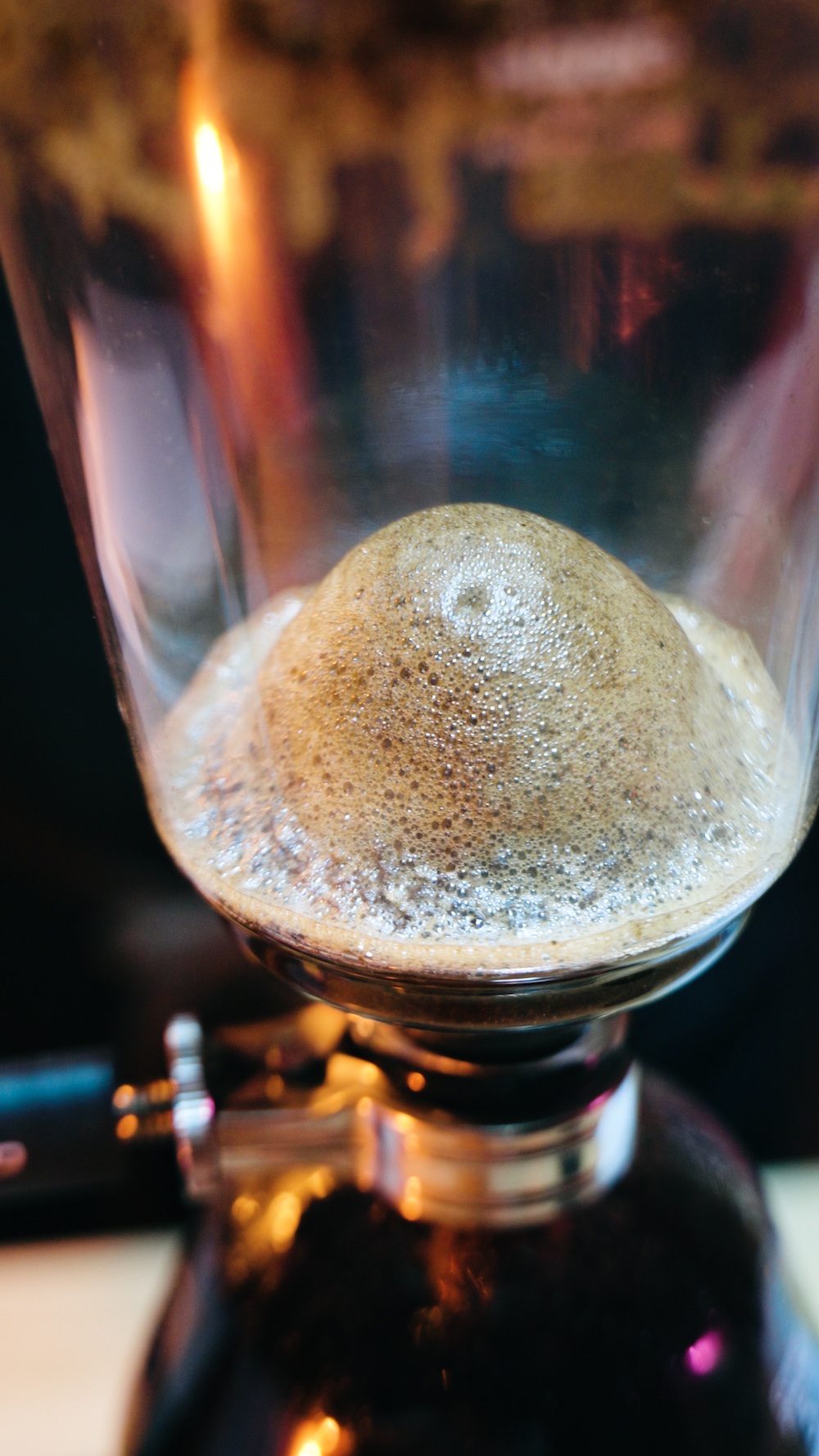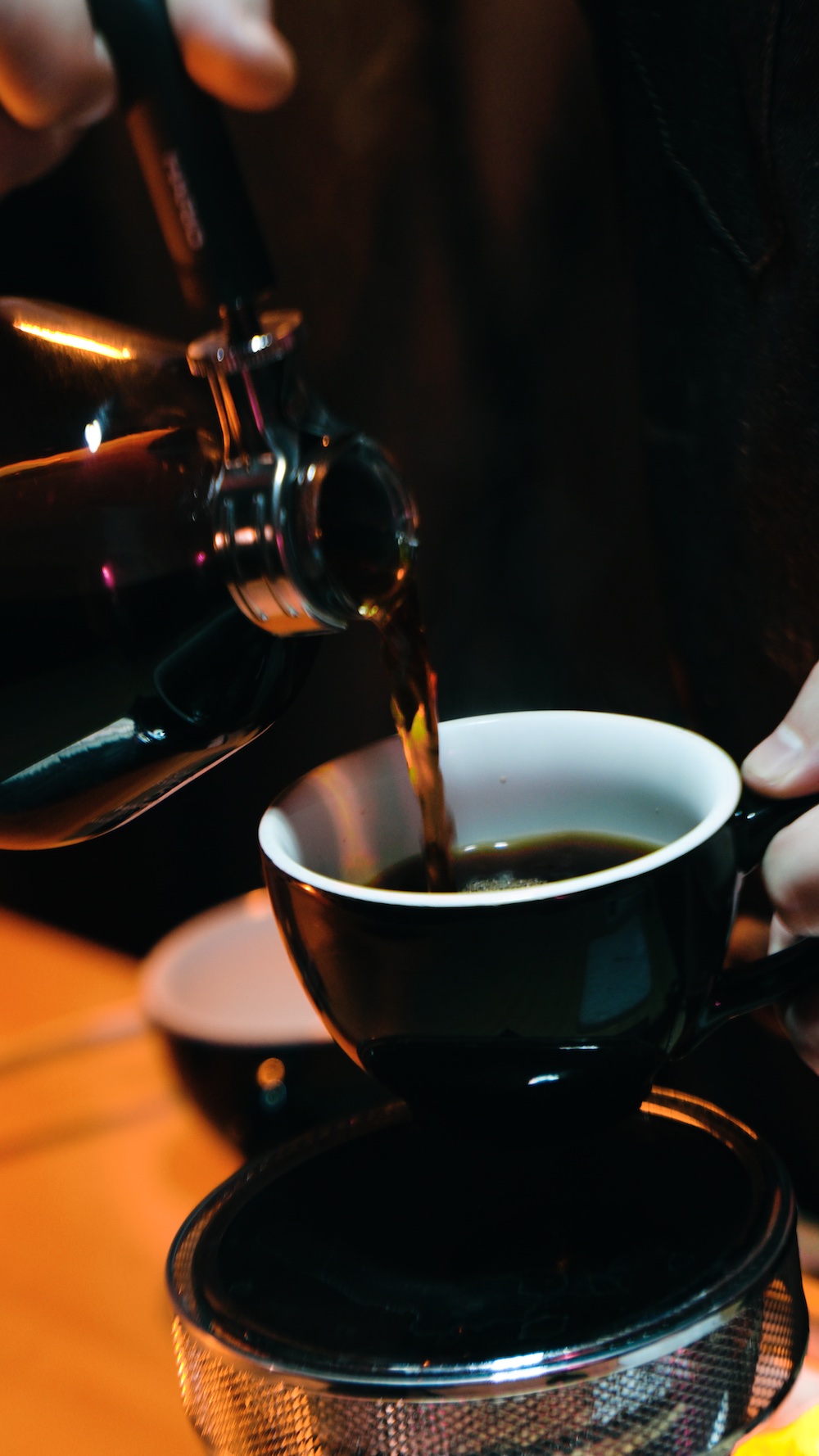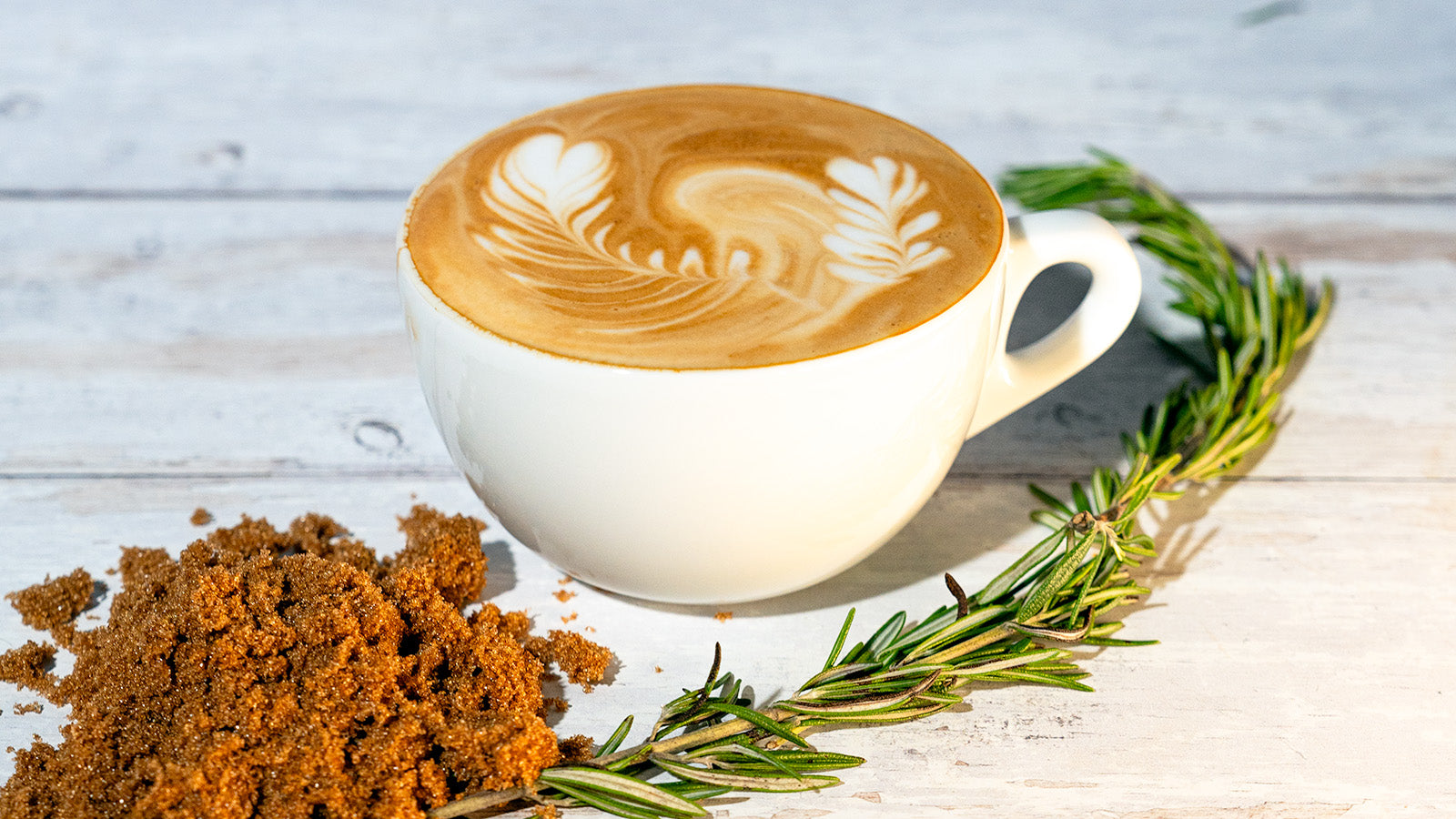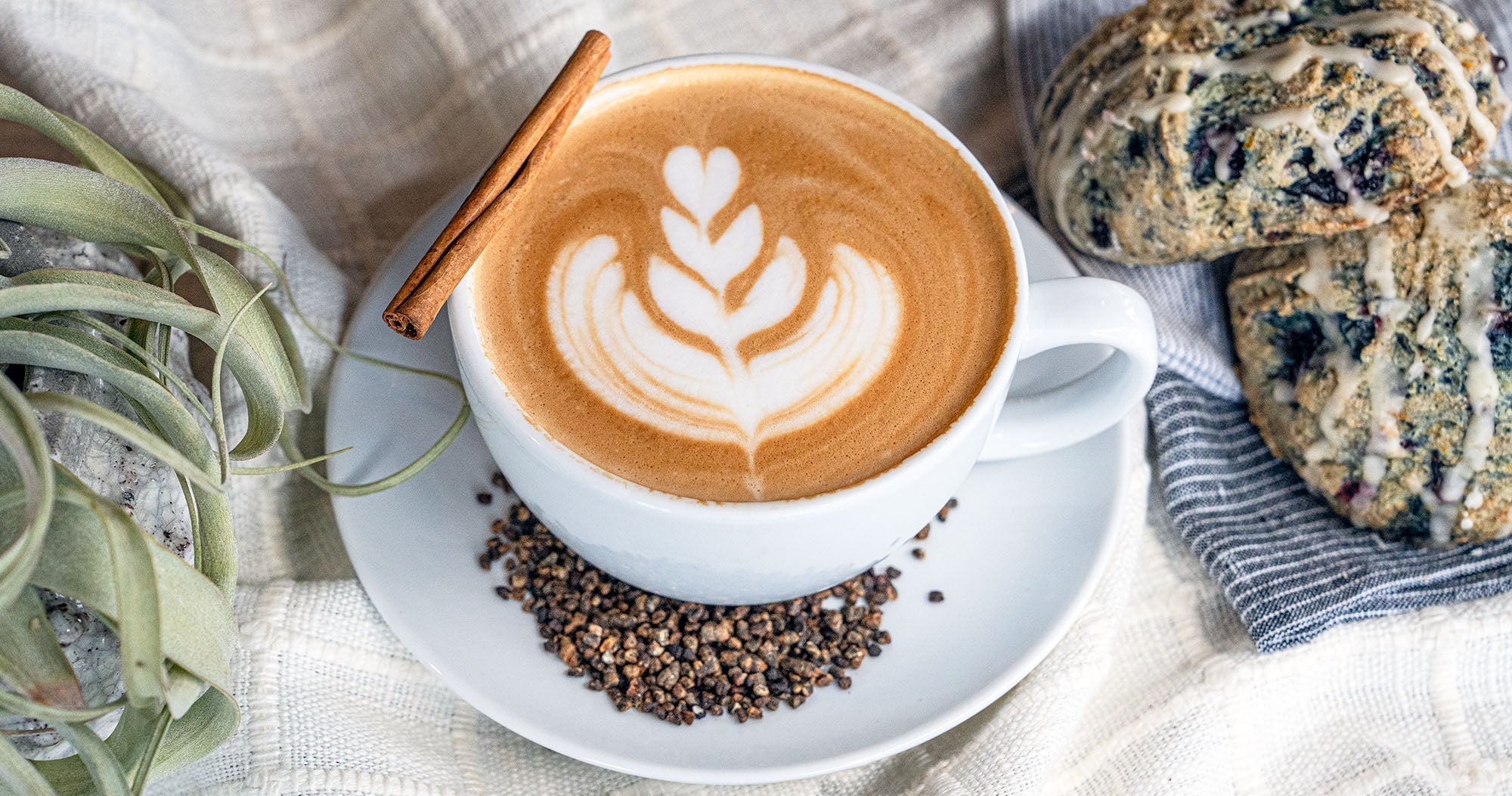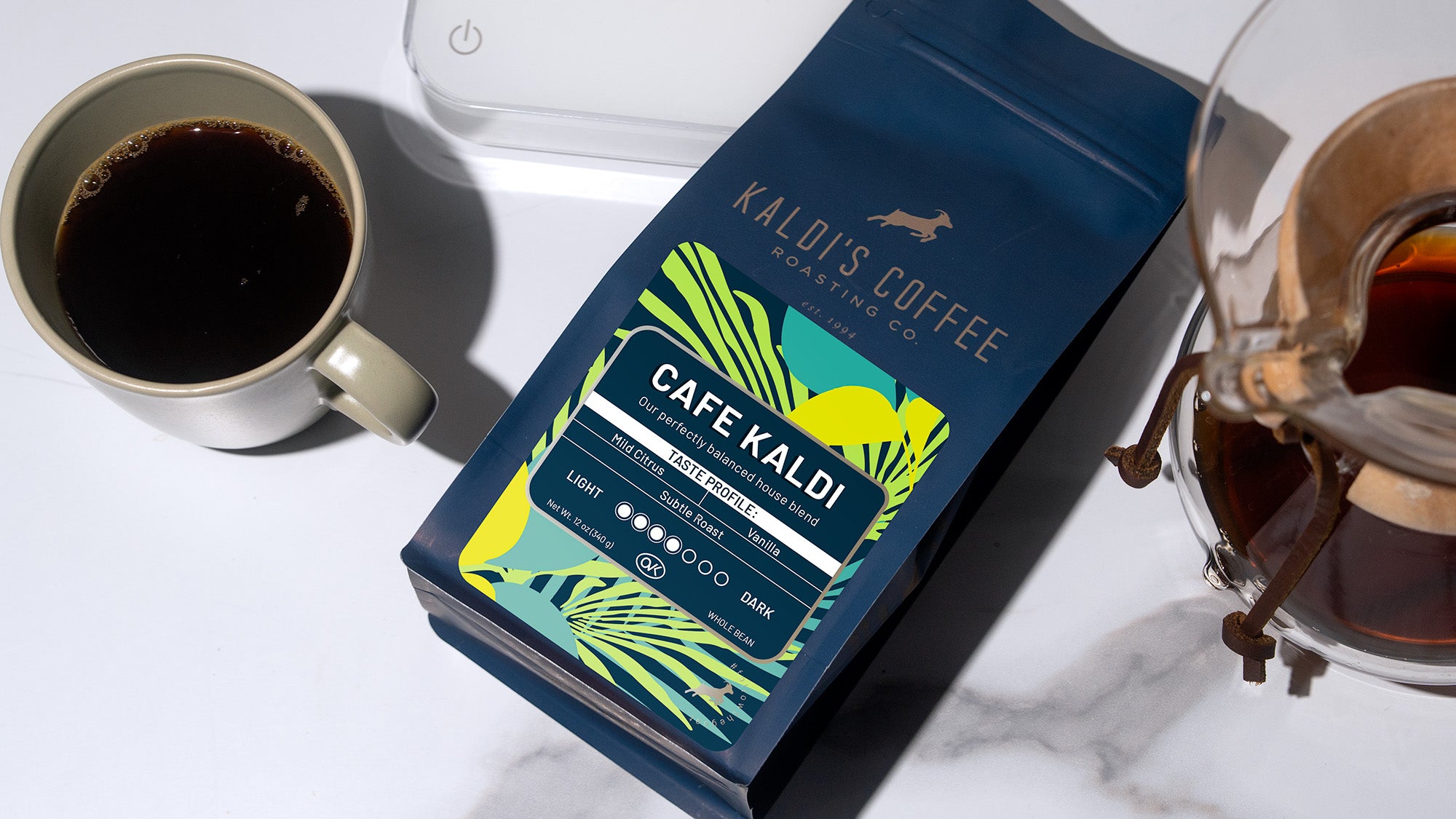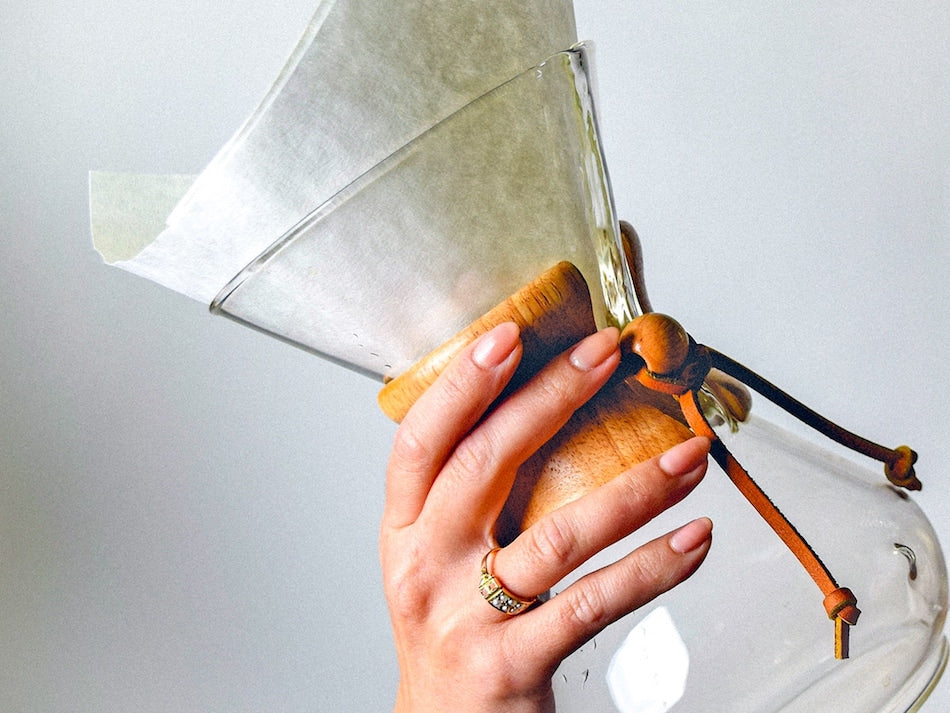First and foremost, the siphon coffee maker is a visually stunning and mentally serene way to brew your coffee.
Secondly, almost no one uses a siphon coffee maker as their main device.
Both things are easy to understand. The process of using a siphon coffee maker is beautiful, bubbly, and warm. It's a totally unique, almost-ancient feeling way of making your favorite coffee, and the resulting cup is usually rich and full-bodied (and piping hot). The trade-off is that the preparation process is involved and the clean up is less than convenient. Still, there are many that fall in love with it, and it can be a fantastic way to break up any brewing monotony you have in your life and add in a fresh dose of appreciation for this remarkable beverage.
In our recipe below, we are using the Hario Syphon Coffee Maker, but the recipe applies to any model you have.

A QUICK SIPHON BREWING PRIMER
A siphon brewer has two chambers, an upper chamber and a lower. Siphon brewing uses heat to create vacuum pressure that effectively pulls water from the lower to the upper chamber. Once the water is in the upper chamber, ground coffee is added and brews using the full immersion method (like a French Press coffee maker). Once you hit your brew time, you remove heat, the liquid falls back to the lower chamber, and an included filter keeps ground coffee from entering your final brew.
It's a little bit like a two chambered French Press with a flame at the bottom and its own heat source.
How does coffee from a siphon coffee maker taste?
Brews from the siphon are usually full-bodied and rich, especially if you use a metal filter.
What are heat sources for a siphon coffee maker?
The three most common heat sources are a butane burner, a halogen lamp, and a candle. The butane burner is probably the most accessible of the three, and the candle is the least recommended due to the lack of heat control and very long warm up times.




